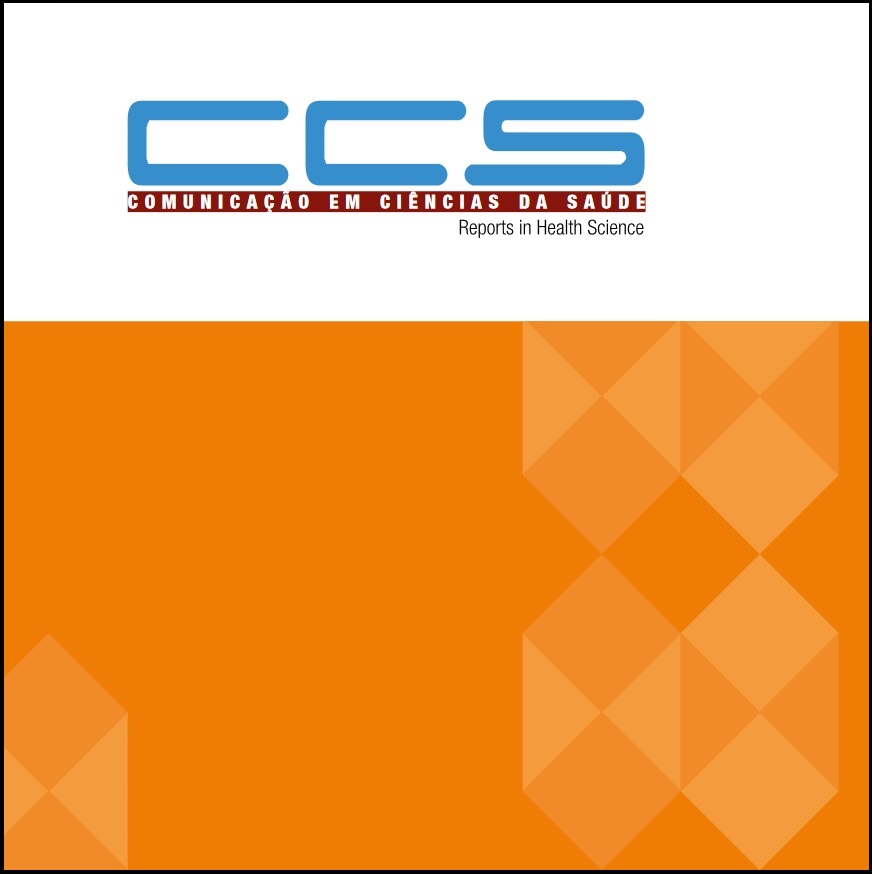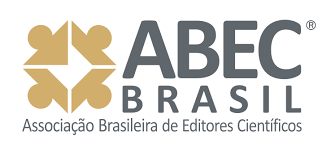Misuse of methylphenidate by university students in the health field
a systematic review
DOI:
https://doi.org/10.51723/ccs.v31i04.777Keywords:
Methylphenidate, Students, Recreational drugsAbstract
Objective: to evaluate the indiscriminate uso of methylphenidate (MPH) by university students in the health area. Method: systematic review of articles in the databases: PubMed, ScienceDirect e Scielo. Search conducted from March to December 2020. 8 articles included. Results: it was observed that the use of MPH without prescription is frequente, in student residences and social events at the university; use is associated with the search for better academic performance and for recreational purposes. Conclusion: it is necessary to deepen studies on the cost/benefit of the use of MPH by healthy people in an uncontrolled way, even though the benefits in specific illness treatments are recognized.
Downloads
References
De Aquino DS. Por que o uso racional de medicamentos deve ser uma prioridade? Vol. 13, Ciencia e Saude Coletiva. Associação Brasileira de Saúde Coletiva; 2008. p. 733–6. Available from: http://www.scielo.br/scielo.php?script=sci_arttext&pid=S1413-81232008000700023&lng=en&nrm=iso&tlng=pt
Fernandes WS, Cembranelli JC. Automedicação e o uso irracional de medicamentos: o papel do profissional farmacêutico no combate a essas práticas. Rev Univap. 2015 Aug 4; 21(37):5. http://dx.doi.org/10.18066/revistaunivap.v21i37.265
Pereira S, Ferreira AM, Azevedo A, Barroso C, Monteiro V. Illicit use of Methylphenidate: the other side of the medical prescription. Nascer e Crescer, 2018;27(2): 98-104. Available from: http://www.scielo.mec.pt/scielo.php?script=sci_abstract&pid=S0872-07542018000200005&lng=pt&nrm=iso&tlng=en
NIDA National Institute on Drug Abuse. Commonly abused drugs charts. Retrieved: Feb, 24, 2018: https://www.drugabuse.gov/drugs-abuse/commonly-abused-drugs-charts
Abbasi-Ghahramanloo A, Khodadost M, Moradpour F, Karimirad MR, Kamali R, Ziarati F. Prevalence of nonmedical use of prescription-type opioids, methylphenidate, and sedative-hypnotics among university students in the south of Iran: a regression analysis. Electron Physician.2018;10(6):6981‐6987. Available from: http://www.ephysician.irhttp//dx.doi.org/10.19082/6981http://www.ephysician.ir
Fallah G, Moudi S, Hamidia A, Bijani A. (2018). Stimulant use in medical students and residents requires more careful attention. Caspian journal of internal medicine, 9(1), 87–91. https://doi.org/10.22088/cjim.9.1.87
Ministério da Saúde, Nota técnica Nº 38 /2012. Brasília, 2012.
Shmueli D, Gross-Tzur V. Attention deficit hyperactivity disorder: Pharmacological options that are not “Ritalin”. Harefuah, 2005;144(8): 572–76, 597. Available from: https://pubmed.ncbi.nlm.nih.gov/16146157/
Eickenhorst P, Vitzthum K, Klapp BF, Groneberg D, Mache S. Neuroenhancement among German university students: motives, expectations, and relationship with psychoactive lifestyle drugs. J Psychoactive Drugs. 2012;44(5):418‐427. https://doi.org/10.1080/02791072.2012.736845
Jensen C, Forlini C, Partridge B, Hall W. Australian University Students' Coping Strategies and Use of Pharmaceutical Stimulants as Cognitive Enhancers. Front Psychol. 2016; 7:277. https://doi.org/10.3389/fpsyg.2016.00277
Korn L, Hassan K, Fainshtein N, Yusov N, Davidovitch N. Non-Medical Use of Prescription Stimulants for Treatment of Attention Disorders by University Students: Characteristics and Associations. Med Sci Monit. 2019;25: 3778‐3787. https://doi.org/10.12659/MSM.913973
Ram SS, Hussainy S, Henning M, Stewart K, Jensen M, Russell B. Attitudes Toward Cognitive Enhancer Use Among New Zealand Tertiary Students. Subst Use Misuse. 2017;52(11):1387‐1392. https://doi.org/10.1080/10826084.2017.1281313
Rush CR, Baker RW. Behavioral pharmacological similarities between methylphenidate and cocaine in cocaine abusers. Exp Clin Psychopharmacol. 2001;9(1):59‐73. https://doi.org/10.1037/1064-1297.9.1.59
Klein-Schwartz W, McGrath J. Poison centers' experience with methylphenidate abuse in pre-teens and adolescents. J Am Acad Child Adolesc Psychiatry. 2003;42(3):288‐294. https://doi.org/10.1097/00004583-200303000-00008
Freese L, Signor L, Machado C, Ferigolo M, Barros & Tannhauser HM. Non-medical use of methylphenidate: a review. Trends Psychiatry Psychother, 2012;34(2), 110-115. https://doi.org/10.1590/S2237-60892012000200010
ONU. Report of the International Narcotics Control Board for 2014. United Nations: International Narcotics Control Board, 2015.
Fond G, Gavaret M, Vidal C, Brunel L, Riveline JP, Micoulaud-Franchi JA, Domenech P. (Mis)use of Prescribed Stimulants in the Medical Student Community: Motives and Behaviors: A Population-Based Cross-Sectional Study. Medicine, 2016;95(16), e3366. https://doi.org/10.1097/MD.0000000000003366
Cohen YG, Segev RW, Shlafman N, Novack V, Ifergane G. Methylphenidate use among medical students at Ben-Gurion University of the Negev. J Neurosci Rural Pract, 2015;6(3), 320–325. https://doi.org/10.4103/0976-3147.158749
Jain R, Chang CC, Koto M, Geldenhuys A, Nichol R, Joubert G. Non-medical use of methylphenidate among medical students of the University of the Free State. S Afr J Psychiatr. 2017;23: 1006. https://doi.org/10.4102/sajpsychiatry.v23.1006
Javed N, Ahmed F, Saeed S, Amir R, Khan H, Iqbal SP. Prevalence of Methylphenidate Misuse in Medical Colleges in Pakistan: A Cross-sectional Study. Cureus, 2019;11(10), 5879. https://doi.org/10.7759/cureus.5879
Repantis D, Schlattmann P, Laisney O, Heuser I. Modafinil and methylphenidate for neuroenhancement in healthy individuals: A systematic review. Pharmacol Res. 2010;62(3):187‐206. https://doi.org/10.1016/j.phrs.2010.04.002
Cândido RC, Perini E, Pádua CM, Junqueira DR. Prevalência e fatores associados ao uso de metilfenidato para neuroaprimoramento farmacológico entre estudantes universitários. Einstein (São Paulo), 2020;18, AO4745. https://doi.org/10.31744/einstein_journal/2020ao4745
de Oliveira Cata Preta B, Miranda VIA, Bertoldi AD. Psychostimulant Use for Neuroenhancement (Smart Drugs) among College Students in Brazil. Subst Use Misuse. 2020;55(4):613‐621. https://doi.org/10.1080/10826084.2019.1691597
Safiri S, Rahimi-Movaghar A, Yunesian M, et al. Subgrouping of risky behaviors among Iranian college students: a latent class analysis. Neuropsychiatr Dis Treat. 2016;12: 1809-1816. https://doi.org/10.2147/NDT.S107349
Additional Files
Published
Versions
- 2021-04-09 (2)
- 2021-02-09 (1)
How to Cite
Issue
Section
License
Declaro para os devidos fins que o artigo que estou submetendo representa um trabalho original e nunca foi publicado total ou parcialmente, e que se alguma de suas partes foi publicada possuímos autorização expressa para a publicação no periódico Comunicação em Ciências da Saúde (CCS). Esse artigo não foi enviado a outro periódico e não o será enquanto estiver sendo considerada sua publicação; caso venha a ser aceito não será publicado em outro periódico; e não contém material difamatório ou ilegal sob nenhuma forma, não viola a intimidade de terceiros, nem infringe direitos protegidos.
Eu e demais autores desse trabalho certificamos por meio desta declaração que:
- Concordamos com as normas editoriais e com o processo de revisão da CCS;
- Aceitamos a responsabilidade pela conduta desse estudo e pela análise e interpretação dos dados;
- Cooperaremos, sempre que solicitado, na obtenção e fornecimento de dados sobre os quais o manuscrito está baseado, para exame dos avaliadores;
- Não estão sendo omitidos quaisquer ligações ou acordos de financiamento entre os autores e companhias ou pessoas que possam ter interesse no material abordado no artigo;
- Não estão sendo excluídos ou omitidos deste artigo autores ou instituições participantes;
- Possuímos permissão para uso de figuras e tabelas publicadas em outras fontes;
- Possuímos permissão das pessoas e instituições citadas nos agradecimentos;
- O autor correspondente autoriza a publicação do endereço informado e e-mail do(s) autor(es) junto com o artigo;
- Assumimos a responsabilidade pela entrega de documentos verídicos;
- Autorizamos a publicação do referido artigo no periódico Comunicação em Ciências da Saúde, segundo critérios próprios e em número e volume a serem definidos pelo editor do periódico;
- Nos comprometemos a atender os prazos estipulados pelos editores do periódico Comunicação em Ciências da saúde;
- Estamos cientes de que a não manifestação no prazo de dois dias da revisão da diagramação, recebida por e-mail, será considerado aprovado para publicação.








